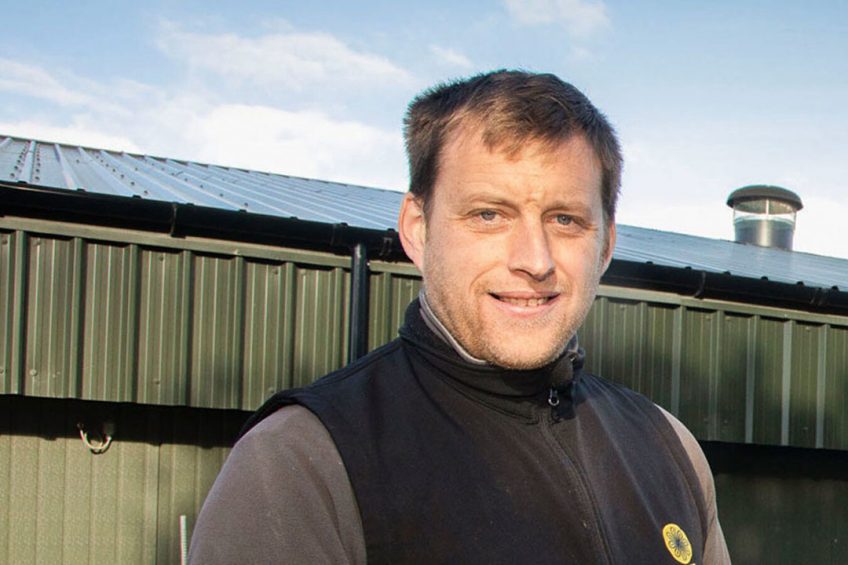Swapping egg size and colour could reduce ammonia emissions

Consumers that change their buying habits and purchase smaller white eggs rather than extra-large brown eggs can help producers reduce ammonia levels.
That is the conclusion of a recent study undertaken by free-range egg producer Llyr Jones from Wales who was awarded a bursary to complete the work.
Llyr runs a 16,000-hen free-range egg unit at Derwydd, at Llanfihangel Glyn Myfyr near Corwen, and is aiming to build a second unit, doubling the number of hens in his system. However, before going ahead with the farm expansion he was keen to investigate the best practice for reducing ammonia levels while keeping to the same level of production. In order to facilitate the study Llyr was awarded a Farming Connect management exchange programme bursary from the Welsh government to investigate how a free-range egg producer like him can reduce ammonia generated by egg production.
Supermarkets and consumers will need to dig deep and pay a higher price for goods and food that are not bad for the environment.”
Inspiration: A carbon-free egg farm
Using the funds Llyr travelled to Kipster, a carbon-free egg farm populated by white hens in the Netherlands. These hens eat 118 g/day to produce white eggs which weigh on average 62 g. In contrast, a brown hen needs 125 g/day to produce a 63 g egg. As well as consuming less feed, white hens lay for an average of 80 weeks compared to 74 weeks for brown hens. Llyr said: “Supermarkets and consumers will need to dig deep and pay a higher price for goods and food that are not bad for the environment. Consumers may need to make small changes such as buying white, slightly smaller eggs rather than extra-large brown eggs and buy local seasonal food rather than flying it from the other side of the world so it can be sold fresh.”
 How to ensure litter quality?
How to ensure litter quality?
Depending on region and climate conditions, the floor in the broiler house can differ, as can the availability of litter material. 7 causes of wet litter.
Reducing ammonia through driers
While in the Netherlands Llyr visited the headquarters of Jansen Poultry Equipment that manufactures ammonia reducing machines. He said: “These driers cost £45,000 each and can dry hen muck from 30% dry matter to 60%, reducing ammonia levels by 30%. It uses very little power as it runs the muck over 200 m of belts.”
 Floating poultry farm connects farm and consumer
Floating poultry farm connects farm and consumer
Innovation platform Kip van Oranje and Floating Farms is in the middle of realising a dream, the Floating Egg Farm, in the harbour of the city of Rotterdam. The pilot project will explore new interactions between farm and city, benefiting both.
Reducing ammonia through a scrubber
The company also manufactures a chemical ammonia scrubber which reduces ammonia by 90%. Air from the hen shed is pushed into the chemical air scrubber, where sulphuric acid is sprayed on to the air. Llyr explains: “The acid attaches itself to ammonia, and water is then added to reduce the pH level to neutral. The farmer can produce 60 m3 of fertiliser with an N value of 20%. The saving in the cost of buying in fertiliser easily pays for the running cost of the chemical air scrubber. The disadvantage of the chemical scrubber is the cost of build. Due to the need to use stainless steel, the building cost is £90,000, and the running cost per year is £5,000.” Llyr concluded that by making small changes in daily farming routines, such as mucking hens out every day rather than twice a week, farmers can reduce air pollution. “Genetics and different feeds will also help reduce ammonia in agriculture. We could also see farms producing their own fertiliser from building chemical air scrubbers or using better methods to apply slurry on fields,” he said.













